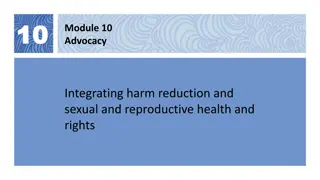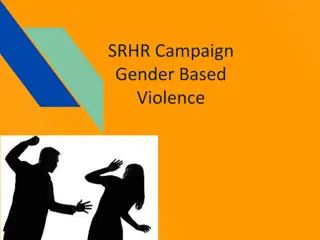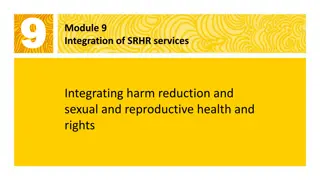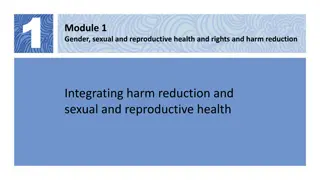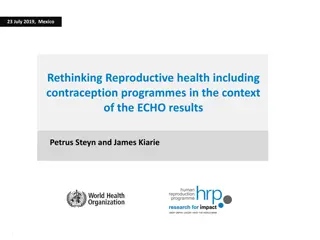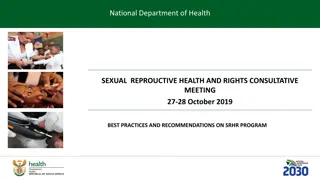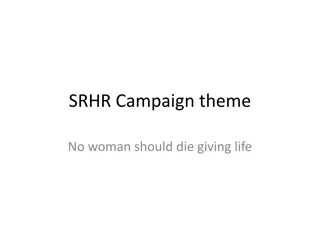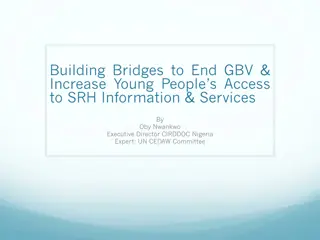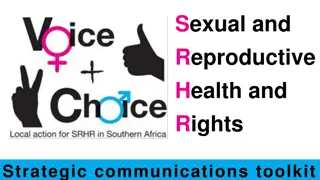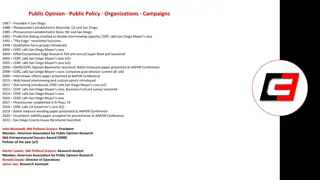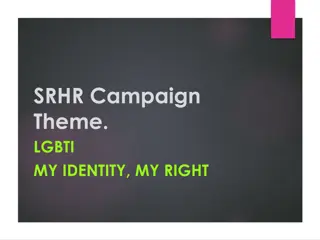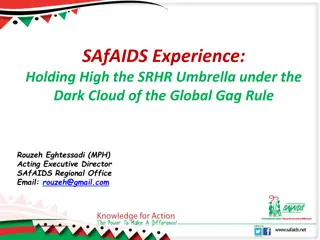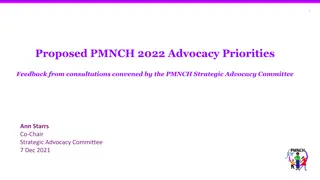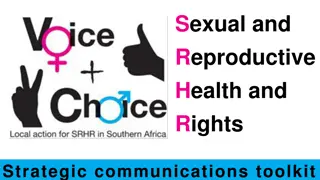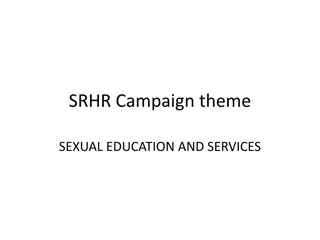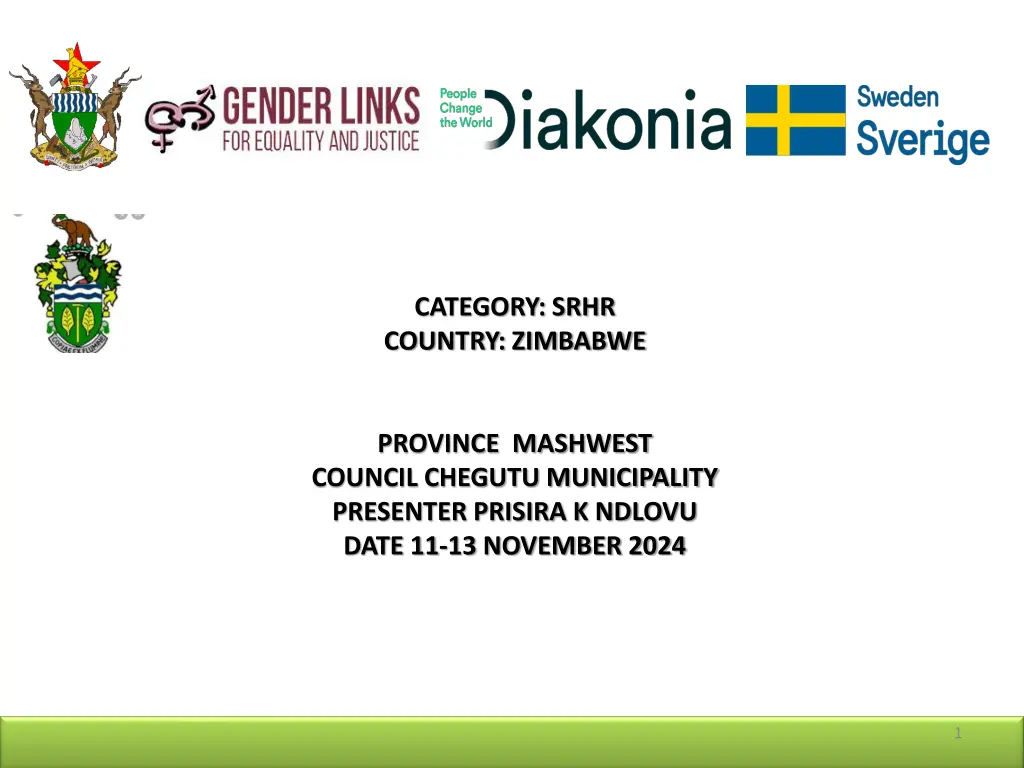
Improving Viral Load Coverage and Empowering PLHIV in Zimbabwe
This project in Zimbabwe aims to improve viral load coverage from 34% to 95%, empower PLHIV, and create a friendly environment at Chinengundu Clinic. Targeting pregnant women, PLHIV, and children living with HIV, the project employs strategies like routine testing, client cohorting, and community outreach to achieve its goals.
Download Presentation

Please find below an Image/Link to download the presentation.
The content on the website is provided AS IS for your information and personal use only. It may not be sold, licensed, or shared on other websites without obtaining consent from the author. If you encounter any issues during the download, it is possible that the publisher has removed the file from their server.
You are allowed to download the files provided on this website for personal or commercial use, subject to the condition that they are used lawfully. All files are the property of their respective owners.
The content on the website is provided AS IS for your information and personal use only. It may not be sold, licensed, or shared on other websites without obtaining consent from the author.
E N D
Presentation Transcript
CATEGORY: SRHR COUNTRY: ZIMBABWE PROVINCE MASHWEST COUNCIL CHEGUTU MUNICIPALITY PRESENTER PRISIRA K NDLOVU DATE 11-13 NOVEMBER 2024 1
BACKGROUND Photo Brief summary of the project. What is the problem being addressed? What is the goal of the project? What strategies are being employed to address the problem? Why were these strategies chosen? To improve VL coverage from 34% to 95% To share correct information on VL suppression and coverage To empower PLHIV on importance of being virally suppressed To create a friendly environment at Chinengundu Clinic To increase access betweeen clinic and lab To strengthen lab capacity To improve messaging to caregivers, families on importance of VL To tailor support to cater for children in different age groups 2
OBJECTIVES What did the process/project set out to achieve? Short-term and long-term objectives. To improve VL coverage from 34% to 95% To share correct information on VL suppression and coverage To empower PLHIV on importance of being virally suppressed To create a friendly environment at Chinengundu Clinic To increase access betweeen clinic and lab To strengthen lab capacity To improve messaging to caregivers, families on importance of VL To tailor support to cater for children in different age groups Photo 3
TARGET GROUPS Who is the target group? Why did you select this group? Pregnant women living with HIV PLHIV Children living with HIV Why did you select this group? Risk of transmission to unborn baby Children- poor adherence to ART , paediatric infections from Mother to child infections from Mother to Child PLHIV to keep them healthy & productive 4
ACTIVITIES Photo Describe the project activities and approach to achieve the desired results. Routine VL testing Using dedicated VL mobile phones at facility level Flagging clients without current VL results Client cohorting Meaningful engagement 5
STRATEGIES EMPLOYED BY THE PROJECT What strategies were employed by the project? How successful were these? Client cohorting Community outreach On site sampling Routine VL collection Close monitoring of facility provider based challenges Evaluating VL implementation Collaboration Continous quality improvement Training and coaching staff on job The above strategies were successful- they were user friendly 6
PARTNERS Photo Did you work with any partners in the implementation of this programme? What was their role? Will you continue engaging partners existing and or new? Worked with partners, MOHCC,UNICEF,PVT SECTOR, NGO s,CDC Collaborating with MOHCC 7
BUDGET Amount in $ nill mukando,poultry,peanu t butter making $1000 usd Gender specific allocation Gender in mainstream projects (please specify) Amount contributed in cash or in kind by partner organisations (please specify) Other sources (please specify) Total nill $1000 8
PARTICIPANTS Category Women Men Total % Women Direct participants 1185 443 1628 73% Indirect participants (e.g. through other networks) 0 0 0 0 Online participants (e.g. website access, mailing lists, scholarly articles) 0 0 0 0 Total 1185 443 1628 73% 9
CHALLENGES What have been the main challenges? How have these challenges been overcome? What lessons have been learned? How will the learning be applied? Limited access to testing Shortage of trained staff and erratic supply of consumables Patients/ Clients too mobile Leakages along the VL cascade Sample collection challenges The challenges have been overcomed by improving service delivery Improve adherence Reduce waiting times Improve access Collaborate with community partners Provide psychological intervention Lessons learnt Gaining insights and experience for future use Areas of improvement identified Adoption of good strategies Risk management Stakeholder engagement Decision making Documentation How will the learning be applied? Identify benefit Keep practising Track progress Review and understand Set goals Allay fear Mentoring others 10
RESULTS Please share some of your results: What are the short-term and long-term impacts of the project? How is the project responding to: Women s empowerment Public participation Media coverage (including social media) Capacity building Changes in gender attitudes at individual and community level Any other changesPlease share some of your results: Short-term impacts Reduced risk of sexual transmission Improve health living with productivity Reduced perinatal transmission Long-term impacts Preserving health Preventing sexual transmission Motivating adherence to treatment Reducing mobediting Include evidence here photos/clippings How is the project responding to: Women s empowerment Joining clubs to buy groceries, poultry farming and peanut butter making Public participation- Reduced gender based violence Media coverage (including social media)-Publishing success stories Capacity building- Ongoing trainings Changes in gender attitudes at individual and community level- No segregation of duties at household level and in the community Any other changes-Increased Healthy nation, Increased productivity, ,Improved reproductive health,Improved health seeking behavior and Reduced SGBV 11
LEARNING What are the key lessons from this project/practice? How will you apply the lessons going forward? Change is a process & its gradual Peer support is crucial Several interventions are key Virtual platforms for sharing information Embracing quality improvement Inclusivity is the backborn of the achievement 12
MONITORING AND EVALUATION How do you monitor the success of the project? What types of monitoring and evaluation methods and tools did you use to measure impact? How do you monitor the success of the project? Customer satisfication Stakeholder satisfaction Risk management Tracking key perfomance indicators Identifying project objective Team satisfaction What types of monitoring and evaluation methods and tools did you use to measure impact? Viral load test Dried Blood Spots CD4 count Data analysis Run charts- weekly or bi-weekly Appointment diary Greenbooks Tracing and tracking register Having targets Check perfomance 13
SUSTAINABILITY AND REPLICATION How can the work be sustained/kept going? How can the work be cascaded to other organisations? How can the work be sustained/kept going? Refresher courses On-job training Capacity building Community led initiatives Sharing based practises Using lessons learnt Stakeholder feedback How can the work be cascaded to other organisations? Goal cascading Communication cascade Clear objectives Perfomance measurements 14
NEXT STEPS What are the key priorities going forward? Continuous research on how to improve viral coverage Project planning Continuous execution Monitoring and controlling Communication Scope of the project Stakeholder involvement Include evidence here photos/clippings 15

